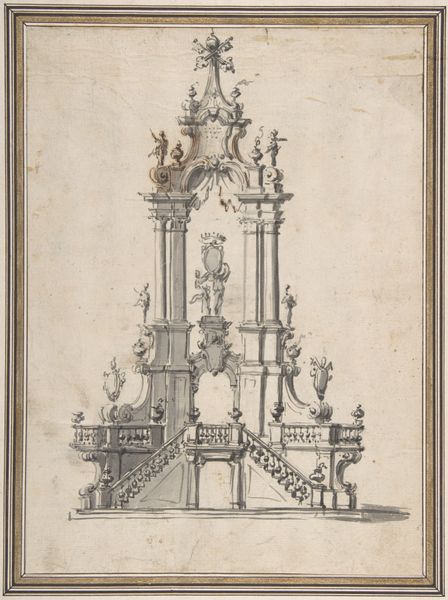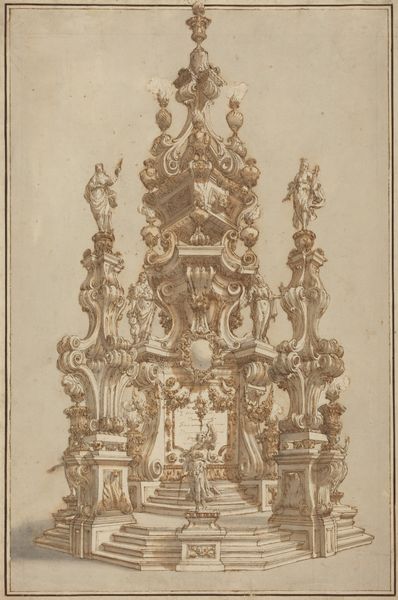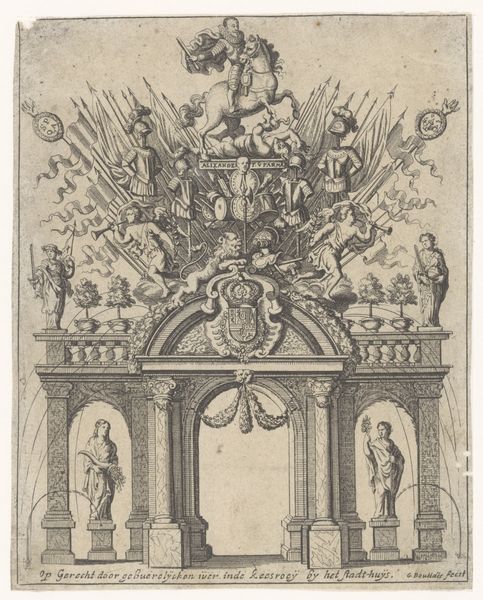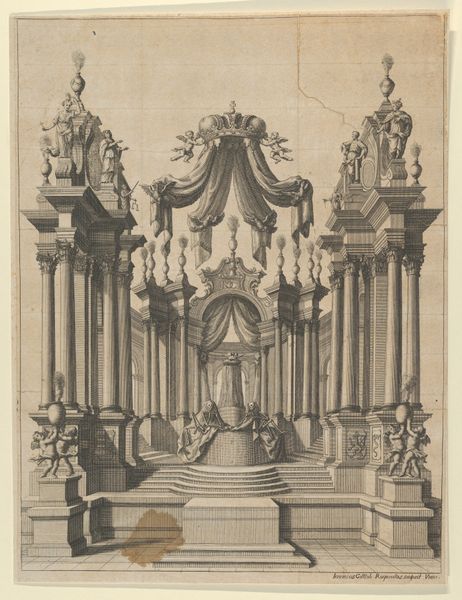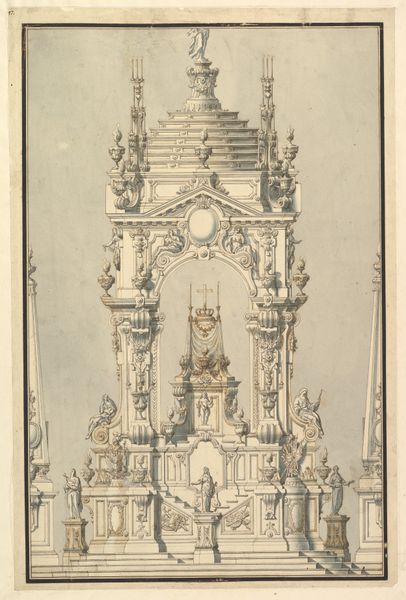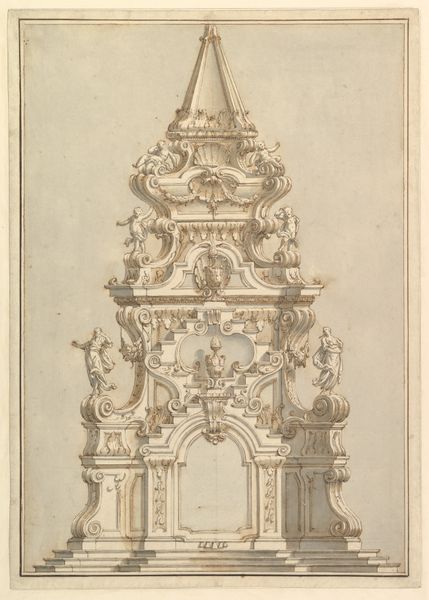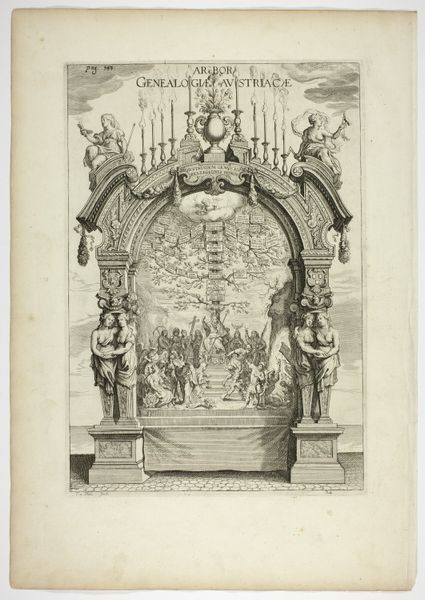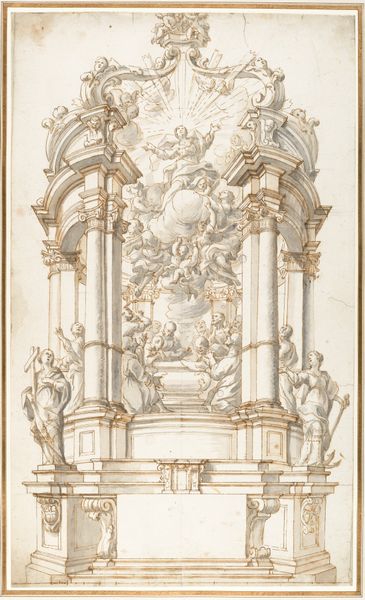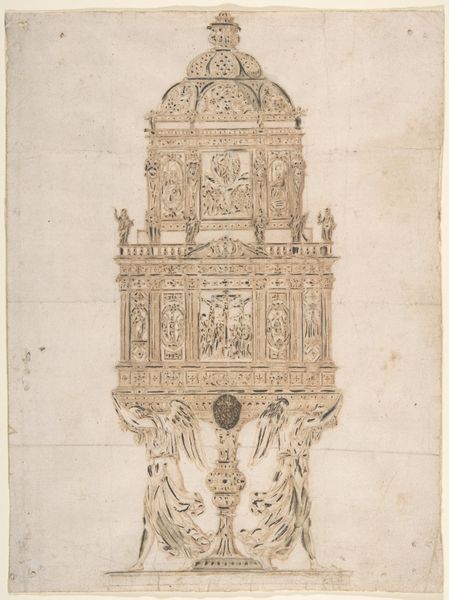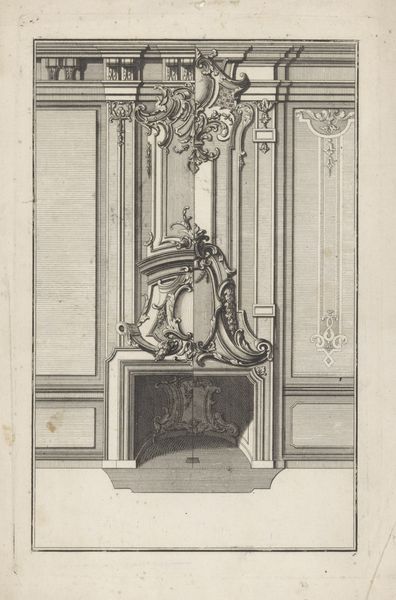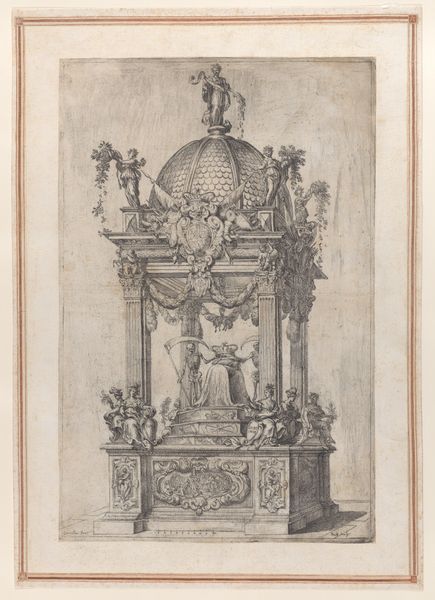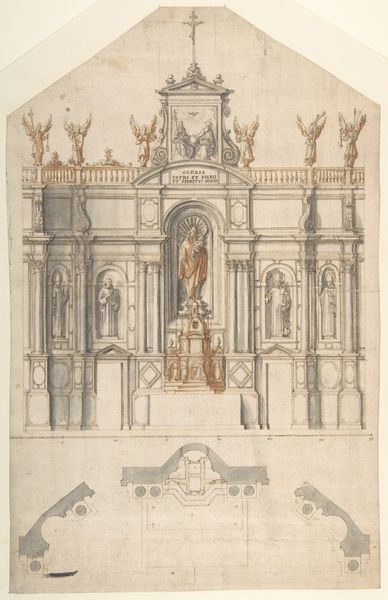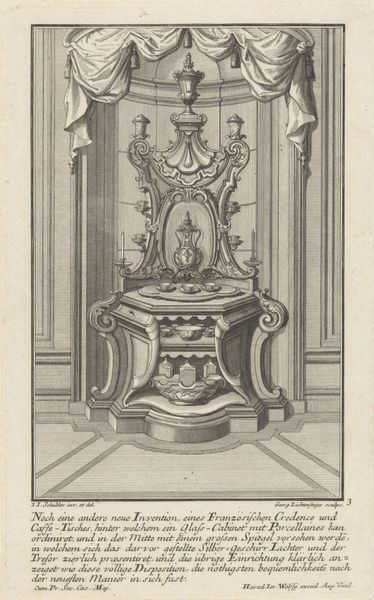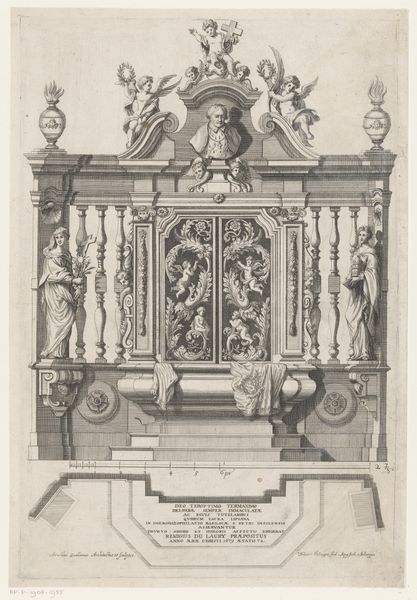
Design for a Catafalque for King Philip IV of Spain 17th century
0:00
0:00
drawing, print, ink, engraving, architecture
#
portrait
#
drawing
#
baroque
# print
#
ink
#
column
#
architecture drawing
#
history-painting
#
engraving
#
architecture
Dimensions: sheet: 18 13/16 x 14 5/16 in. (47.8 x 36.4 cm)
Copyright: Public Domain
Curator: The piece before us is titled "Design for a Catafalque for King Philip IV of Spain," a 17th-century drawing held at the Metropolitan Museum. It’s rendered in ink and engraving. What are your initial thoughts? Editor: The monumentality is striking. A vast stage to house death—so grandiose, ornate. I'm struck by the level of control inherent in these designs. Curator: Absolutely. Note the sheer scale—the steps ascending towards what seems like an effigy of the King, framed by classical columns and draped fabric. It exemplifies the baroque aesthetic, emphasizing dramatic contrasts through the stark tonal differences. Editor: Those figures surrounding the catafalque--mourners or representatives? Are they physical supports as well, and the staircase implies the weight of tradition. What purpose do you suppose they serve in the composition as cultural symbols? Curator: Their positioning invites scrutiny of the overall form of a grand centralized monument, each echoing forms within the broader structure of architectural and sculptural language. Editor: To elevate the stature of this monument. I see those flickering lights among the sculptures flanking the staircase—evocative of a constant flame in the presence of the dead. Such symbolic continuity, even across death. Curator: Indeed, by manipulating spatial planes and structural elements such as columns, stairs and light. It enhances a sense of theater to mourn an absolutist leader. The whole composition seeks to create an environment charged with symbolic value. Editor: Consider the semiotic implications embedded. This is designed not just to commemorate death but, perhaps, also royal immortality, a transition from one form to the next. Curator: A very important reading of cultural performance and the afterlife. It also highlights how effective art is in engaging viewers. This elaborate arrangement reveals not only about the death of a king, but the era in which it occurred. Editor: An impressive design; thanks to our analysis. Now it prompts broader thinking about death in society—how we collectively, visually process such profound symbolic weight.
Comments
No comments
Be the first to comment and join the conversation on the ultimate creative platform.
